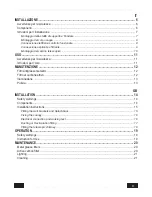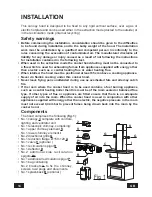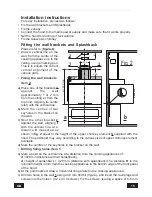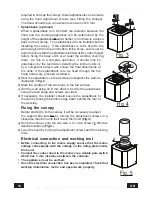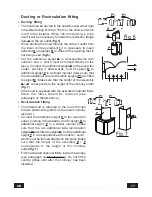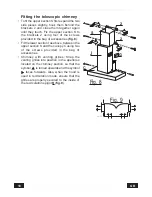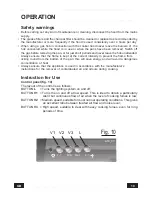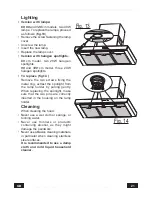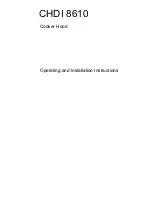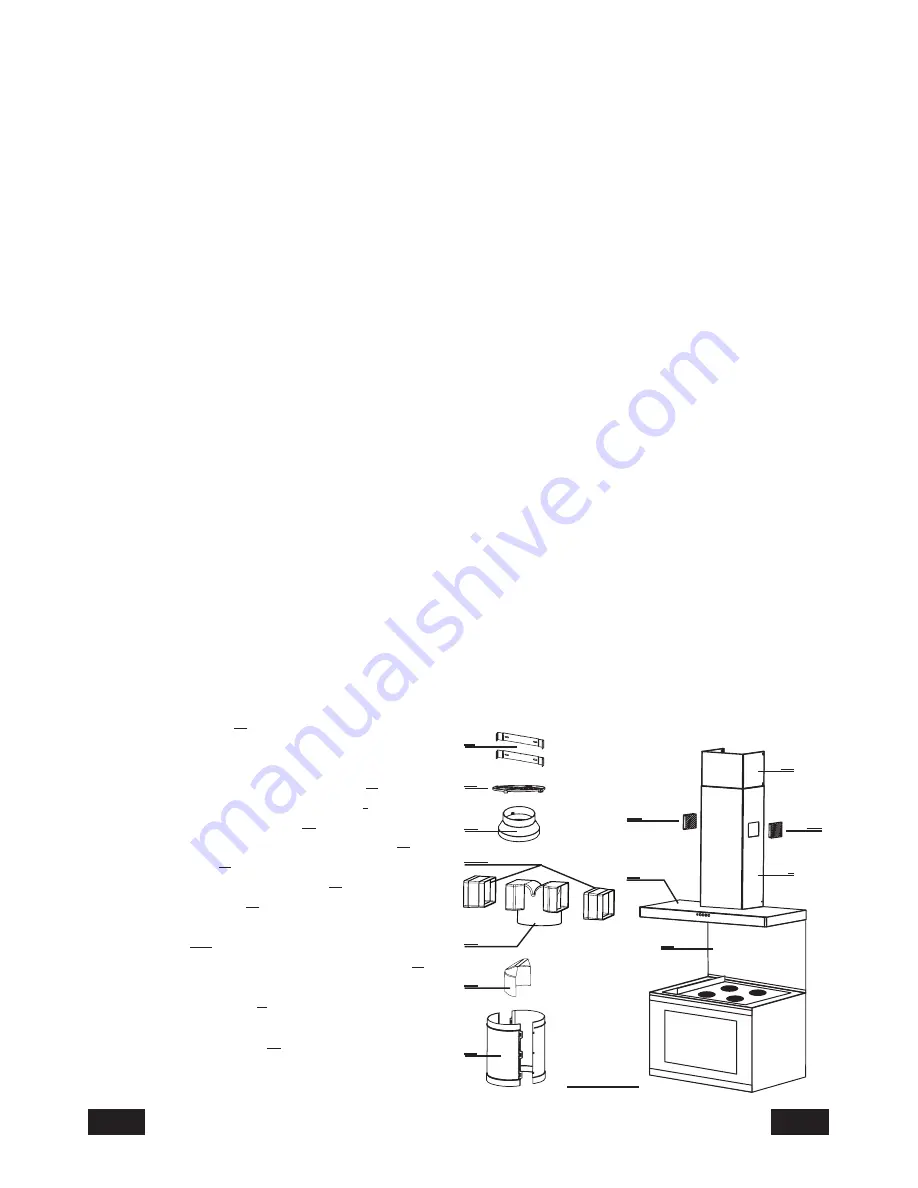
14
○
○
○
○
○
○
○
○
○
○
○
○
○
○
○
○
○
○
○
○
○
○
○
○
○
○
○
○
○
○
○
○
○
○
○
○
○
○
○
○
○
○
○
○
○
○
○
○
○
○
○
○
○
○
○
○
○
○
○
○
○
○
○
○
○
○
○
○
○
○
○
○
○
○
○
○
○
○
○
○
○
○
○
○
○
○
GB
○
○
○
○
○
○
○
○
○
○
○
○
○
○
○
○
○
○
○
○
○
○
○
○
○
○
○
○
○
○
○
○
○
○
○
○
○
○
○
○
○
○
○
○
○
○
○
INSTALLATION
This canopy hood is designed to be fixed to any rigid vertical surface, over a gas or
electric hotplate and can be used either in the extraction mode (ducted to the outside) or
in the recirculation mode (internal recycling).
Safety warnings
• Before commencing the installation, consideration should be given to the difficulties
to be found during installation and to the bulky weight of the hood. The installation
work must be undertaken by a qualified and competent person in conformity to the
rules concerning the evacuation of contaminated air. The manufacturer disclaims all
liability for any damage or injury caused as a result of not following the instructions
for installation contained in the following text.
• When used in the extraction mode the cooker hood ducting must not be connected to
a flue which is used for exhausting fumes from appliances supplied with energy other
than electric such as a central heating flue or water heating flue.
• When istalled, the hood must be positioned at least 65 cm above a cooking appliance.
• Never do flambé cooking under this cooker hood.
• Never leave frying pans unattended during use as overheated fats and oils may catch
fire.
• If the room where the cooker hood is to be used contains a fuel burning appliance
such as a central heating boiler then this must be of the room sealed or balanced flue
type. If other types of flue or appliance are fitted ensure that there is an adequate
supply of air into the room. When the cooker hood is used in conjunction with other
appliances supplied with energy other than electric, the negative pressure in the room
must not exceed 0,04 mbar to prevent fumes being drawn back into the room by the
cooker hood.
Components
The hood comprises the following (
fig.1
):
• No.1 canopy
C
complete with controls,
lighting and ventilator unit
• No.1 telescopic chimney, comprising:
No.1 upper chimney element
S
No.1 lower chimney element
I
• No.2 directional grills
G
• No.1 reduction flange Ø 150-120
A
• No.1 valve
V
(optional )
• No.1 recirculation spigot
R
• No.1 deflector
D
• No.2 additional side recirculation
spigots
P1
• No.1 additional recirculation spigot
P
• No.1 bag containing:
No.2 brackets
2
to fix the chimney,
screws, rawl plugs and documents.
• No.1 splashback
B
(optional )
2
A
R
P1
D
P
G
G
B
V
S
I
C
Fig. 1


